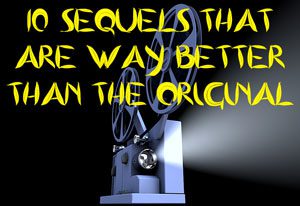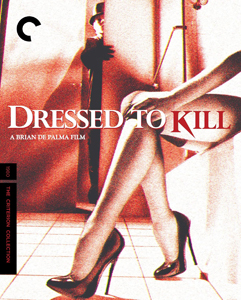If writer-director Brian De Palma was a Hitchcock student in “Sisters” (1972), he’s a Hitchcock teacher in “Dressed to Kill” (1980), a riff on the master that becomes its own thing thanks to the aesthetics of a new decade, blunt sexuality and language newly allowed by the ratings board, and a smart re-arranging of shopworn puzzle pieces into a fresh picture.
The neatest Hitchcockian traits that De Palma carries over – and that many filmmakers fail to use successfully (including De Palma himself on “The Fury”) – are that he switches main characters throughout the narrative, has many side characters that don’t matter even though it seems they must, and puts suspense ahead of narrative progression when that choice must be made.
(SPOILERS FOLLOW.)
If “Sisters” is a “Rear Window” riff, “Dressed to Kill” is even more so a “Psycho” riff. I noted in my review of the documentary “78/52” that – as influential as The Shower Scene is on pushing the envelope of sex and violence in cinema – not many films take this trope to the next level. “Dressed to Kill” does, in not one but three sequences (one of which, admittedly, is in an elevator rather than a shower).

“Dressed to Kill” (1980)
Director: Brian De Palma
Writer: Brian De Palma
Stars: Michael Caine, Angie Dickinson, Nancy Allen
The film establishes its sexual preoccupations in the opening scene when Kate (Angie Dickinson) sensually soaps herself in a steaming shower — and let’s just say we see much more of her than we do of Janet Leigh. The music here, and through much of the film, is soft, like a primetime melodrama, establishing a winkingly dark sense of humor.
Later, in the famous Elevator Scene, composer Pino Donaggio uses Bernard Herrmann’s Shower Scene cue but with the soothing instruments rather than the harsh ones. And then De Palma’s grand finale features a twist on the 1960 scene as the showering target (Nancy Allen’s Liz) is aware someone is standing outside the door, which is cracked open a bit. So unlike Marion Crane, she might have a fighting chance.
‘Psycho,’ but from a fresh angle
Additionally, “Dressed to Kill” fully embraces transgender characters (called transvestites in “Psycho” and transsexuals in “Dressed to Kill”) and their curiosity value, as trans people were moving into the wider consciousness. De Palma’s riff on the Final Explanation from “Psycho” is blatant, with a doctor (David Margulies) delivering pop psychology to cop Marino (Dennis Franz, in his most proto-“NYPD Blue” role).
While “Dressed to Kill” doesn’t stand up to 21st century political correctness standards, De Palma does try to balance out the portrayals, as a good-guy character is transgender. A viewer can tell he’s attempting to balance salaciousness with sensitivity. Maybe it’s bound to fail, but I give him credit for trying.

After all, this was 1980, and the time frame itself — a sense of new tech for a new decade — is the way De Palma most moves beyond Hitchcock (who died that year). One of the several “main” (temporarily plot-driving) characters is Kate’s son Peter (Keith Gordon, who viewers at the time might’ve recognized as one of the teens from “Jaws 2”).
Precursing 1981’s “Blow Out,” science geek Peter taps Marino’s conversation with his mom’s psychologist (Michael Caine’s Dr. Elliott) as he gathers info to probe his mom’s murder on his own. And when Kate is over at an unnamed (and almost faceless) paramour’s apartment, he has an alarm clock with the innards showing, a Spencer Gifts nod to cutting-edge tech.
De Palma effectively uses Hitch’s “suspense before story advancement” principle. Kate is being followed around an art gallery – and De Palma strips the sound from the sequence, even when Kate briefly talks to the man following her. The fact that this daytime hook-up has no narrative purpose (except in the random “one event leads to another” sense) doesn’t matter because De Palma is building suspense however he can.
Building its unreality
He does this again when a group of cliched subway thugs pursues Liz while she’s also trying to evade the killer. This sequence could’ve been written straight-up as the killer pursuing Liz, like one of those slasher movies where the entire citizenry disappears, leaving only killer and victim. By adding these side characters, De Palma increases the size of the film’s world, and its sense of reality.
That having been said, “Dressed to Kill” is never ashamed of its unreality, ranging from the validity of the pop psychology to the questionable idea that the woman stalking Kate and Liz matches in size with the eventually revealed killer.
(END OF SPOILERS.)
De Palma shoots dream sequences like real-world suspense sequences, but with enough dream “logic” to not be cheating, and enough importance to the dreamer to not be pointless. As a result, we have a movie that successfully balances legitimate (if borderline taboo) socio-political topics without losing sight of its identity as escapist entertainment.
While the director wouldn’t want the movie to be labeled “silly” overall, he’s fine if some scenes start with lowest-common-denominator appeal (i.e. an attractive woman showering). To see where this balance gets out of whack, note how “The Fury” – directed but not written by De Palma – effectively introduces many characters and plot points but then does not know what to do with them. That’s the most frustrating of viewing experiences.
When you’re introduced to several diverse people, and the points-of-view shift several times, and we’re diverted into suspenseful side adventures, yet it all ties together, there are few more satisfying experiences. “Dressed to Kill,” on the short list of best Hitchcock films not made by Hitchcock, is one of those experiences.

